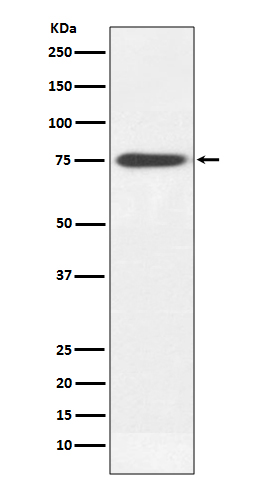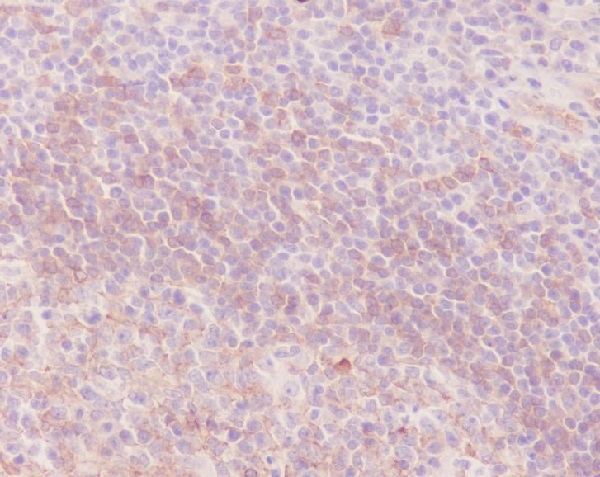

| WB | 咨询技术 | Human,Mouse,Rat |
| IF | 1/20 | Human,Mouse,Rat |
| IHC | 1/50-1/100 | Human,Mouse,Rat |
| ICC | 技术咨询 | Human,Mouse,Rat |
| FCM | 咨询技术 | Human,Mouse,Rat |
| Elisa | 咨询技术 | Human,Mouse,Rat |
| Aliases | Ig mu chain C region |
| Entrez GeneID | 3507 |
| WB Predicted band size | Calculated MW: 49 kDa; Observed MW: 75 kDa |
| Host/Isotype | Rabbit IgG |
| Antibody Type | Primary antibody |
| Storage | Store at 4°C short term. Aliquot and store at -20°C long term. Avoid freeze/thaw cycles. |
| Species Reactivity | Human |
| Immunogen | A synthesized peptide derived from human Human IgM |
| Formulation | Purified antibody in PBS with 0.05% sodium azide. |
+ +
1. **"IgM in microbial infections: Taken for granted?"**
*Author: Baumgarth N. et al.*
*Journal: Trends in Immunology (2019)*
摘要:探讨IgM在早期抗微生物感染中的核心作用,包括其多聚体结构增强病原体中和能力,以及通过补体激活和Fc受体信号调控先天与适应性免疫应答的机制。
2. **"The role of IgM antibodies in the immune response"**
*Author: Heyman B.*
*Journal: Immunology Letters (2000)*
摘要:分析IgM通过结合FcμR或补体成分增强抗原呈递的机制,提出其作为“免疫应答放大器”在启动B细胞活化及调节抗体亲和力成熟中的关键作用。
3. **"Structure and function of immunoglobulins: IgM"**
*Author: Johansen F.E. et al.*
*Journal: Journal of Immunology (2000)*
摘要:解析人类IgM五聚体/J链的结构特征,阐明其在黏膜免疫中的分泌机制及作为B细胞受体(BCR)时对早期病原识别的信号转导途径。
4. **"IgM antibodies against SARS-CoV-2 correlate with disease severity in COVID-19"**
*Author: Cervia C. et al.*
*Journal: Nature Communications (2021)*
摘要:通过队列研究证明COVID-19患者血清IgM水平与肺部炎症程度正相关,提示其可能通过过度激活补体系统加剧急性期组织损伤的致病双重性。
Human immunoglobulin M (IgM) is a foundational component of the adaptive immune system, representing the first antibody class produced during initial exposure to pathogens. As the largest antibody in humans (~970 kDa), IgM exists predominantly as a pentameric structure composed of five monomeric units linked by disulfide bonds and a joining (J) chain. Each monomer contains two heavy (μ) chains and two light chains, forming ten antigen-binding sites. This multivalent configuration enhances its ability to bind pathogens with low-affinity interactions, compensating for its typically lower antigen specificity compared to IgG.
Secreted by plasma cells, IgM is critical in the early stages of infection. It neutralizes pathogens, activates the complement cascade via the classical pathway, and promotes opsonization. Its presence in blood and lymphatic fluid makes it particularly effective against systemic infections. Membrane-bound IgM also serves as the B-cell receptor (BCR) on naïve B cells, initiating antigen recognition and signaling for antibody production.
Clinically, IgM levels are diagnostic markers for acute infections, autoimmune disorders (e.g., rheumatoid arthritis), and certain cancers. While its short half-life (~5 days) and large size limit therapeutic use, engineered IgM variants are being explored for enhanced neutralization in antiviral or anticancer therapies. Despite being overshadowed by IgG in long-term immunity, IgM remains indispensable for rapid immune responses and bridging innate and adaptive immunity.
×